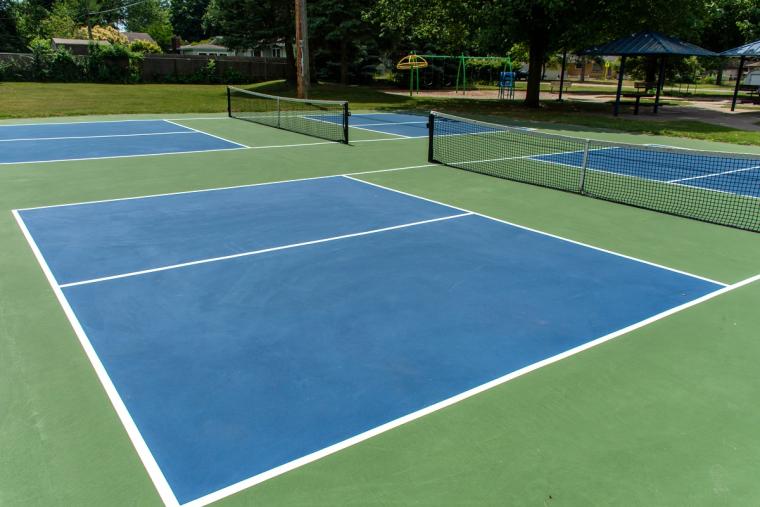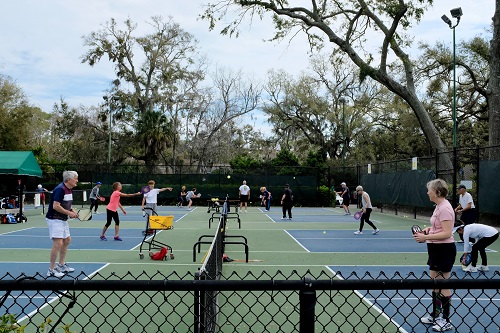
We know about the growth of pickleball. We know it’s skewing younger every year. We also know about the uptick in competitive events at every level.
As cited in Sports & Fitness Industry Association (SFIA)’s Topline Participation Report, pickleball has continued its incredible rise in America, increasing by 85.7 percent year-over-year and by an astonishing 158.6 percent over three years. (And yes, that number was, in fact, 158.6 percent.)
With 8.9 million participants in 2022, the number of new participants in pickleball exceeded the total number of pickleball participants in 2021. This highlights the unprecedented growth and increased awareness of the sport, leading to the importance of leveraging facility data in addition to more detailed participation breakdowns.
The report notes that pickleball participation grew in every region in the United States in 2022, with the Southeast and Mid-Atlantic regions (including Delaware, Florida, Georgia, Maryland, North Carolina, South Carolina and Virginia) leading the way with 1.9 million pickleball players.
What seems to be in doubt: Whether there are enough courts to keep up with the demand. Sportico, in fact, says a $900 million investment needs to be made nationwide to build those venues.
According to the SFIA and their partner, Pickleheads, there’s a shortage in that regard, and some places in particular really are not keeping up with the demand for courts. The states of New York, New Jersey and Pennsylvania, for example, have only about one dedicated court per 1,000 participants. (A dedicated court means one that is not shared with another sport, like tennis, volleyball or basketball.)
Many of America’s largest metropolitan cities are far behind in satisfying pickleball demand for court infrastructure, with New York and Los Angeles both 98 percent below national averages for dedicated courts per 10,000 people. With over 70 percent of pickleball courts currently temporary in nature, there remains a large opportunity to build dedicated facilities, especially in America’s core metropolitan areas. And that means a lot of places are missing out on hosting events, not just on satisfying player demand.
Ouch. But perhaps one of the sticking points for development is this: Pickleball is still being viewed by many as a fad, rather than a trend. A fashion is something that comes and goes, (like Prancercise or acro skiing – many apologies, and no offense meant, to representatives of both of those sports) and a trend is something that emerges and stays (like obstacle racing or competitive climbing).
 Some areas have built pickleball courts in response to the demand, and the population that plays has responded enthusiastically. The Pacific area (with 1.5 million players) and Northeast region (1.4 million) had the second and third highest level of participation.
Some areas have built pickleball courts in response to the demand, and the population that plays has responded enthusiastically. The Pacific area (with 1.5 million players) and Northeast region (1.4 million) had the second and third highest level of participation.
The Mountain region (as defined by SFIA, includes Arizona, California and Utah), and has the highest number of dedicated courts per 1,000 participants (4.6), over twice the national average.
“Leveraging our facility data, we can see this impressive growth has created an exciting challenge for the industry – addressing the court shortage in the U.S.,” states Brandon Mackie, Co-founder and COO, Pickleheads. “With over $900 million of investment needed in court infrastructure, the coming years should be very exciting for the pickleball industry.”
Another problem is that communities are putting in courts without doing verified research. Some are simply lining tennis courts for pickleball too, setting the stage for conflicts between athletes in both sports. Others want to put in designated pickleball courts but are doing blind searches on dimensions, clearances and other aspects of facilities, as well as on builders or designers, meaning they could receive erroneous information or inquiries from unqualified builders, and that, as a result, they might build courts that endanger players.
The question will always come up again, however: How to know whether the sport will last? While there are never any quarantees, it is essential to look at the infrastructure for facilities. One of the advantages of building designated courts for pickleball is that those areas can be designed for multi-purpose use, and can be repurposed for sports like volleyball and 3x3 basketball, to increase the usage at various times, should it be discovered the pickleball demand is down.
Some destinations are installing net posts in sleeves that can be removed and capped, and are lining courts in different colors for different sports, such as tennis, 3x3 basketball and pickleball. However, it is essential for facility operators to list when courts have priority use (or reservations use) by atheltes in specific sports, in order to lower the potential for conflict or tension among various user groups. Google phrases like “online court reservation system,” and it is possible to get dozens of hits, often with differing proprietary systems, that can help take operators out of the mix and make the job easier.
Need research? SFIA and Pickleheads just released the 2023 State of Pickleball: Participation & Infrastructure Report, which provides an in-depth analysis of pickleball participation and facilities in the United States. By overlaying detailed participation and facility data, this report highlights the investment needed to keep up with pickleball’s meteoric rise, leveraging data never available before.
Counter to some preconceived perceptions of the sport, the average age of a pickleball participant is 35, while the age group with the most participants is 25-34. The 18- 24 and 65+ age groups were tied for the second highest most participated age group.
Those who need the research to show decision-makers in their area should know that the SFIA’s 2023 pickleball report is available for purchase by clicking here.

